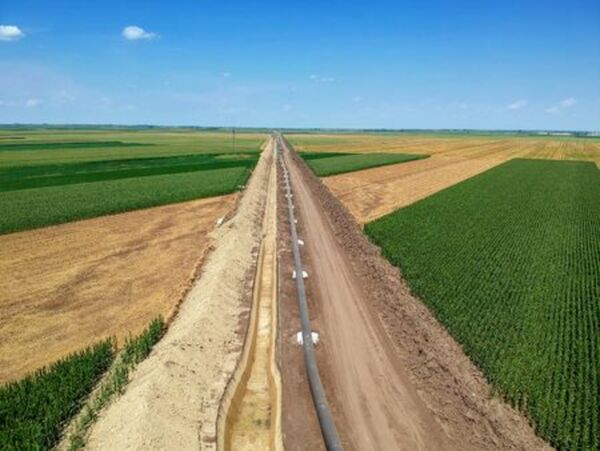
How drones are being used in pipeline inspections
As drones become increasingly popular, they are being used for various purposes. One such use is in pipeline inspections.
Here we will discuss how drones are used in pipeline inspections, the benefits of using drones for this purpose, and the challenges of using drones for this task.
We will also look at how drone technology is evolving and the future of drone-based pipeline inspections.
Pipelines are essential to our infrastructure, carrying everything from water to oil and gas. They are often located in remote or difficult to reach areas, making them hard to inspect.
This is where drones come in. Drones can inspect pipelines quickly and easily without needing a human to be present.
What are drones, and how are they being used in pipeline inspections
Drones, or unmanned aerial vehicles (UAVs), are aircraft that can be operated without a human pilot onboard.
Drones come in various shapes and sizes and can be equipped with sensors and other payloads. In recent years, drone technology has advanced rapidly, and drones are now being used for various applications, including pipeline inspections.
Pipeline inspections traditionally involve expensive and time-consuming helicopters or ground-based surveys. However, drones can now inspect pipelines more efficiently and cost-effectively.
Drone-based pipeline inspections typically involve flying a drone along the length of the pipeline while taking high-resolution photos or videos.
These images can then be processed to identify potential problems, such as leaks, corrosion, or damage. In some cases, drones can also be equipped with thermal cameras to detect leaks that are not visible to the naked eye.
Overall, drone-based pipeline inspections offer many advantages over traditional methods. They are less expensive, more efficient, and cause less disruption. As drone technology continues to improve, drones will likely play an increasingly important role in pipeline inspections.
How drones can fly in tight spaces and avoid obstacles
Drones offer a unique solution for inspecting pipelines and other infrastructure in difficult-to-reach places. Drones can easily maneuver in tight spaces and avoid obstacles thanks to their small size and agile flight.
This makes them ideal for inspecting pipelines that run through densely wooded areas or rugged terrain. In addition, drones equipped with high-resolution cameras can provide a close-up view of the pipeline, allowing operators to identify potential problems.
By using drones for pipeline inspections, companies can save time and money while ensuring that their infrastructure is in good condition.
The benefits of using drones for pipeline inspections
Drone pipeline inspections offer many advantages over traditional methods. First, drones can cover a larger area in a shorter time, which helps to improve safety and efficiency.
Second, drones can provide a more accurate assessment of the condition of a pipeline, as they can get a close-up view of the structure.
Third, drone Inspections can be conducted without interrupting the flow of traffic or other activities near the pipeline. This is not only more convenient, but it also helps to reduce the risk of accidents.
Finally, drone inspections can be performed more frequently than traditional methods, which helps to identify potential problems before they cause significant damage.
As a result, drone pipeline inspections offer many benefits that make them an essential tool for maintaining the safety and integrity of pipelines.
Challenges that come with using drones for pipeline inspections
One of the newest drone applications is drone pipeline inspections. While drones offer a faster, easier, and more cost-effective way to inspect pipelines, several challenges come with this new technology.
First, drones must be equipped with high-quality cameras to provide clear images of the pipeline.
Second, drone operators must be properly trained to fly the drone safely and avoid damage to the pipeline.
Finally, bad weather can make drones difficult or even impossible to fly, which can delay or disrupt inspection schedules.
Despite these challenges, drone pipeline inspections are becoming increasingly popular as the technology continues to improve.
Pipeline Inspection Costs
The costs associated with drone pipeline inspections can vary depending on many factors, including the type of drone used and the length of the pipeline.
However, drone inspections are generally much cheaper than traditional methods, such as hiring a helicopter or sending a team of workers to manually inspect the pipeline.
In addition, drone inspections are non-invasive and pose no risk to the environment or people working near the pipeline.
As a result, drone inspections are an increasingly popular option for companies looking to save money on pipeline inspection costs.
How drone technology is evolving and the future of drone-based pipeline inspections.
Drone technology is evolving rapidly, and drone-based pipeline inspections are becoming increasingly commonplace. Drones offer many advantages for this type of inspection, including the ability to reach difficult-to-access areas and capture high-resolution images and video.
Additionally, drone-based inspections can be conducted more quickly and cheaply than traditional ground-based inspections.
Looking to the future, it is likely that drone technology will continue to evolve and that drone-based pipeline inspections will become even more widespread.
This will allow pipelines to be inspected more quickly and easily, helping to ensure the safety and reliability of critical infrastructure.
With the ever-growing energy demand, pipelines are increasingly needed to transport oil and gas across long distances. However, these pipelines are often located in difficult-to-reach places, making traditional inspection methods impractical.
That’s where drone pipeline inspections come in. Drones can provide a cost-effective and safe way to inspect pipelines, even in remote and dangerous areas. In addition, drone inspections can be conducted more frequently than traditional inspections, providing a higher level of safety for workers and the environment.
As the energy demand grows, drone pipeline inspections will become essential to keeping our infrastructure safe.
Drones are increasingly used for pipeline inspections due to the advantages they offer over traditional inspection methods. Drones can reach difficult-to-access areas, capture high-resolution images, and video, and be conducted more quickly and cheaply than traditional inspections. Also, bad weather does not impede drone operations as it often does ground-based inspections.
Despite the advantages, a few challenges are associated with using drones for pipeline inspections. First, drones must be equipped with high-quality cameras to provide clear images of the pipeline. Second, drone operators must be properly trained to fly the drone safely and avoid damage to the pipeline.
If you’re looking for a safe, cost-effective way to inspect your pipeline, MetroUAV is here to help.
Our drones are equipped with high-quality cameras that provide clear images of the pipeline, and our operators are properly trained to fly the drone safely and avoid damage to the pipeline.
In addition, our inspections are conducted quickly and efficiently, so you can get back to business as usual. Contact us today to learn more about our drone pipeline inspections in Michigan.

